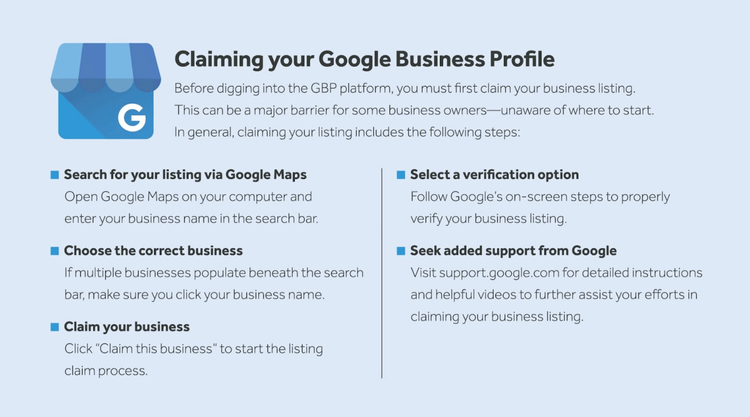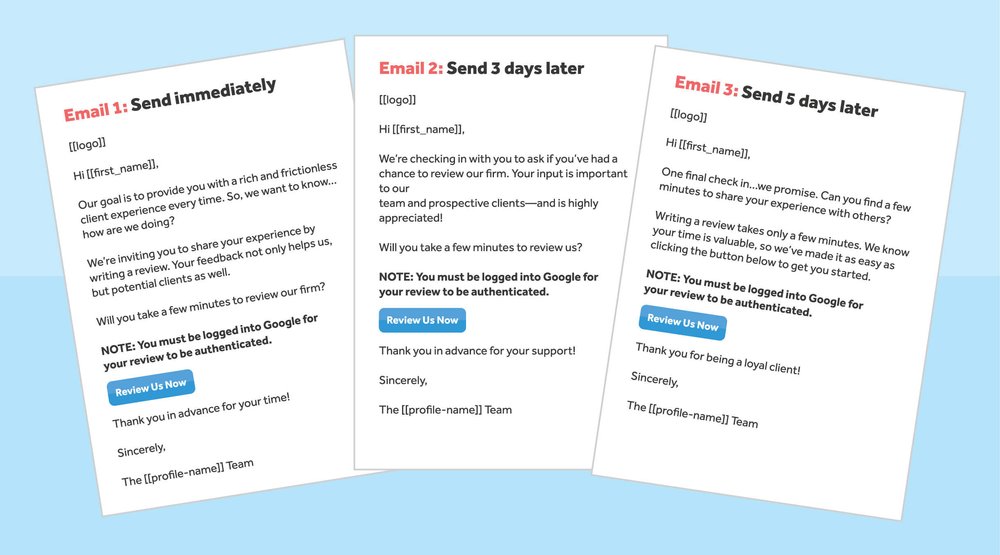Developing a strong online presence is no longer a nice-to-have, but a must-have. And, yes, even for accounting and advisory firms.
Why do you need a strong online presence? Because that’s where your prospects “live.” It’s where they are researching products and services long before they take any action—like contacting you via phone or through your website.
And your prospects are not only online to learn more about what you do. They’re also digging deeper to learn about other clients’ experiences with your firm by scouring online reviews and checking out your Google star rating.
Of course, while a few killer reviews and 5-star ratings help make a good first (online) impression, if clients can’t find you in the first place it’s all for naught. This is why mastering online presence is critical, which can be accomplished by putting a sound digital transformation strategy in place. One focused on boosting your search engine rankings and helping move you to the top of the search page.
But you already know this and it’s why you’re here—for some clear instruction on mastering your firm’s digital strategy. So, we’ll let you get to it by reviewing our four top tips…
Tip 1: Develop a structured online presence plan
Like any seasoned entrepreneur, you understand that success starts with good, sound planning. This is true of online presence as well. So, before you start to create a digital marketing plan to build your online presence, be sure to follow a few key planning steps.
The first step is to record your goals. What do you want to achieve? For example, do you want to:
- Improve search results?
- Rank better across search engines?
- Improve your existing digital strategy or build one from scratch?
- Enhance the customer and prospect experience?
- Expand awareness among local small businesses/prospects?
- Rank higher on Google, specifically?
- Adopt new digital technologies to organize online presence efforts?
If you answered yes to any of these questions, you’ve moved a step closer to defining your online presence goal(s).
The next step is to document the initiatives within your plan. Ask yourself some key questions, including:
- What channels do I want to “be” in? Google Business Profile , Facebook, LinkedIn, Instagram? If you start with a single channel, make sure that it’s GBP. Read on to find out why.
- Where will I get the content to fill my channels? Identify someone on your staff to handle this task or outsource it. You’ll need to produce fresh content throughout the year.
- Who will handle online presence management in my firm? Identify a champion within your firm up front or outsource this task.
- What new technologies do we need? For example, a client review management system or search engine ranking tool.
Once you get to this step, you’re in a good position to move forward with mastering your firm’s online presence and boosting search engine rankings.
Tip 2: Super-optimize your Google Business Profile listing
Google is the fastest-growing search platform—holding 75 percent of search market share. Think about that: three-quarters of market share!
What does this mean for your firm? It’s simple: Google is the place to be and be seen (or rather, be found) by prospects. If you’ve yet to claim and/or optimize your Google Business Profile (GBP) listing, it’s time to get on that.
But first, what is Google Business Profile exactly?
Your GBP listing offers you a dedicated “space” on Google where you can provide prospects with valuable information on your firm—enticing them to click through to your website.
GBP also allows you to start local and progressively expand your online reach. And as a small business owner, why wouldn’t you want to start by dominating local search? Just consider a few stats:
- 46% of all Google searches have a local intent. (Think about how you search for service providers: “Mechanics near me”; “Lawyers, Whitehall, NY”) Thousands of prospects search for an accounting professional in the same manner—they start locally.
- 93% of local searches now feature Google Business Profile listings.
- 68% of people contact a business directly from search results.
Whether you know it or not, you likely already have a GBP listing. Even better (and as numbers people, you’ll love this): It’s free! Within your listing, you control the information visitors see, including a short business description, a contact link, a list of services and so much more.
Google Business Profile should be at the core of digital marketing for small businesses, representing a powerful tool for boosting your Google search ranking and driving organic traffic to your site.
Don’t know if you’ve claimed your GBP listing? Follow these simple instructions to get started.

Tip 3: Leverage multiple social media channels
While your Google business listing should be central in your digital content strategy, don’t forget about other channels like Facebook and LinkedIn to further power your digital transformation strategy.
The main goal is to be where your prospective clients are—and trust that they’re online. Using multiple social media channels to build awareness and consistently push out posts will help you build your online presence faster and bolster SEO (search engine optimization).
In addition to popular social platforms like Facebook, LinkedIn and Twitter, also be aware that GBP offers its own social stream. And that means what? You got it: The more content you post, the faster you’ll boost your search ranking.
Here are a few more tips for perfecting your social strut:
- Post consistently and frequently: Social media is not a set-it-and-forget it thing. Post relevant, helpful information and news on a weekly basis (2-3 times per week is recommended to start).
- Make a visual impact: All copy and no imagery make your business a “dull boy.” Spice up your feed with engaging imagery and photos. Let visitors see the real, authentic you (the people and personalities behind the firm). Also remember that folks are accessing social media on multiple devices, so ensure your imagery is mobile-friendly. User experience is everything!
- Stay on brand: Consider creating a library of beautiful and engaging templates that support your brand and ensure your posts look consistent across channels.
- Post to GBP’s social stream: Yes, it’s so important that we felt the need to mention it again. Make GBP a part of your posting regimen. This will help further boost your firm in Google search results.
- Blog like you mean it: Emerge as a key influencer in your space by starting your own blog. Offer custom content that includes tips, trends, and timely advice to educate your clients and prospects on key areas of small business operations. And bonus: Unique content helps enhance SEO.
All of these tips are “ranking factors” geared to help you bolster search engine rankings. (Quick note: To ensure content is offering you the biggest SEO bang, invest in a search engine ranking tool to “grade” content and provide suggestions to improve content optimization.)
Tip 4: Keep client reviews flowing in
The more online reviews you have, the more fuel you throw on the search engine optimization fire. Reviews equate to custom content—and unique content is a search engine super booster.
How do you keep the client reviews flowing in? Here are a few tips to help you in this area:
- Use a client review management tool: Organize and automate your client review process via a leading app like Grade.us. Within the system, you can send review request emails in batch, respond to reviews, manage lists and more.
- Identify a good client sample: Start out slow by identifying a small batch of clients who would be receptive to writing a review. This will serve as your first email list.
- Send review requests: Upload your client list to your client review management solution and send out a drip campaign (a three-part campaign is recommended). Identify a new list of clients about every six months and repeat. To get you started, see our sample three-part email campaign with suggested release times.

Click here to download the email series.
- Respond to reviews quickly: Good or bad, make sure you respond to every review—immediately if possible or at least within 24 hours. This shows you’re engaged with your online community, which looks good to prospects. Remember, potential clients are watching.
- Because we know how much accounting professionals love their numbers, consider another batch of stats that represent the power of reviews in attracting prospects to your digital front door.
- 92% of B2B customers are more likely to buy after reading a trusted review.
- 60% of customers check Google Business Profile for reviews.
- Consumers read 10 reviews on average before trusting a business.
And if all this isn’t enough to convince you, consider also:
Businesses with current, positive reviews (on average) experience an 18 percent uplift in sales!
Get out there and master it!
We live in the age of all-digital-all-the-time. Online is where people are researching your business, looking for answers on how well you serve your clients, and making decisions on which service provider is the best fit. As such, a strong online presence (which leads to strong search engine rankings) is critical for success—empowering small businesses like yours to take control of SEO.
Think about it. How many times have you made a purchase decision based on a Google search? How many times have you selected a provider based on customer reviews? And more importantly, how many times have you clicked a business listed on page one of your search result (never to venture to page two or beyond)?
Start your journey here by following our four tips! It’s time to make online presence a priority.



